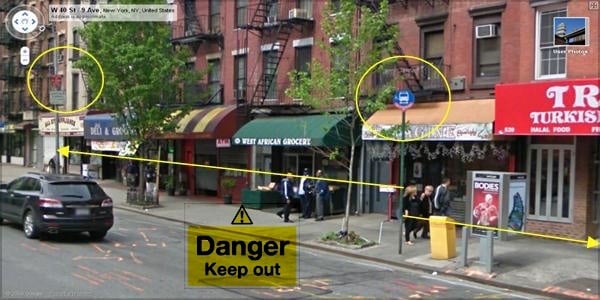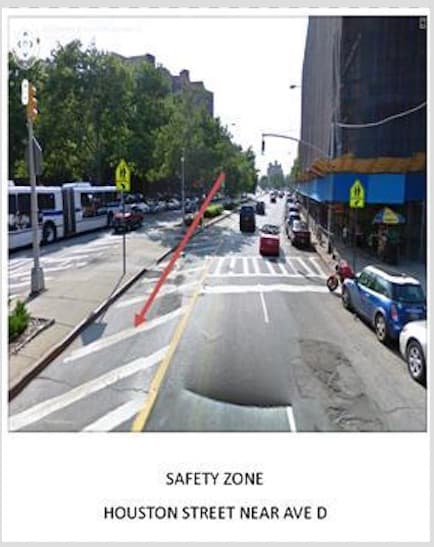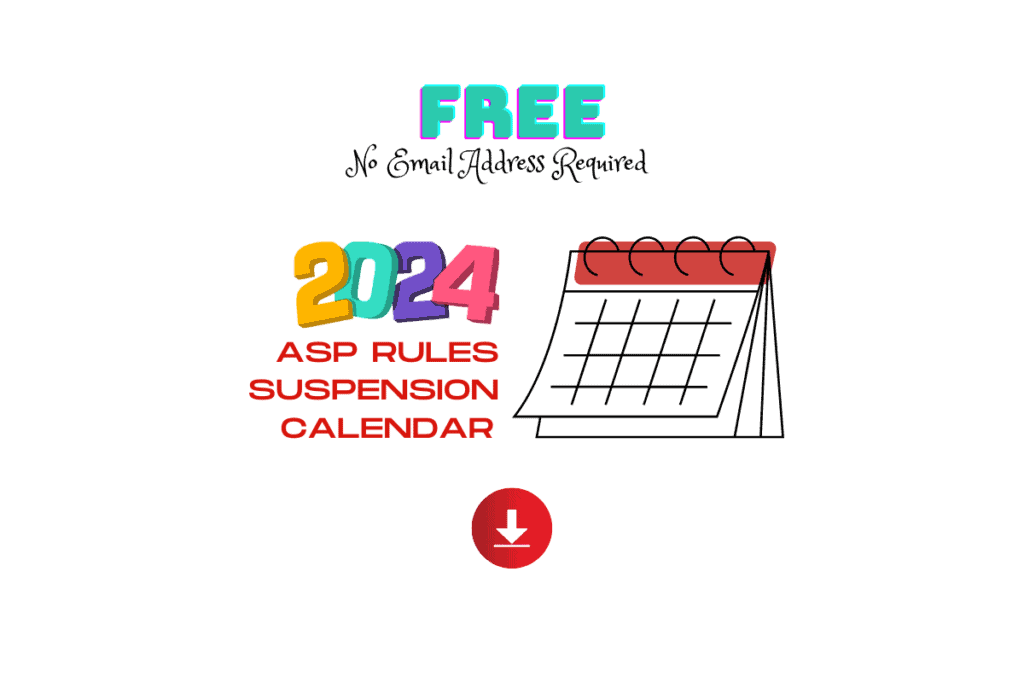Last Updated on July 5, 2021 by Lawrence Berezin
NYC parking ticket mistakes can be very costly
Parking fines range from a street cleaning violation in Queens ($35) to a double parking ticket, boot, and tow in Manhattan ($485). It’s bad enough that we have to pay staggering sums of money for auto insurance, gasoline, service charges, parking, and tolls. But, it is folly to throw away your hard-earned dough to pay for unnecessary parking ticket mistakes.
Here are some parking rules to learn, roadway markings explained, common, and uncommon parking scenarios you may encounter to help you artfully dodge NYC parking tickets.
Basic things you ought to know before parking in NYC
1. The length of a bus stop
A bus stop begins at the bus stop sign and extends in the direction of the arrow(s) until the next parking sign or the end of the block
You are permitted to stop temporarily to expeditiously pick up or drop off a passenger and skedaddle
You cannot block a bus entering or leaving the bus stop zone
You cannot drop off or pick up people AND their property in a bus stop zone
2. Fire Hydrant Rule
You are not permitted to stop, stand or park within 15 feet of any side of a fire hydrant, unless, (1) a licensed driver remains seated behind the wheel (2) of a passenger vehicle (3) with the keys (4) ready to move upon request to do so (5) between sunrise and sunset (Don’t forget you may have to prove the parking ticket was issued between sunrise and sunset. Here’s an Exhibit I offer to prove this element of my client’s defense).
3. No Standing Rule
You are permitted to stop temporarily in a no standing zone to drop off or pick up people, but not their stuff, and leave immediately
4. No Parking Rule
You are permitted to stop temporarily in a no parking zone to drop off or pick up people and their stuff and leave immediately
5. Parking Signs
Parking signs regulate the curb space from the parking sign in the direction of the arrow(s) until the next parking sign or the end of the block
There only has to be one parking sign on a block, regardless of how far away it lives from your car. If the arrow points to your parking space, the rule on the sign regulates the space
The stricter rule trumps the less strict rule. For example, no standing anytime trumps street cleaning on Tuesdays between 11-12:30 p.m.
Your chariot can be regulated by two parking signs. One in front, and one in back of your car. The stricter rule wins the battle of the signs
6. Muni-meters
There are a couple of 5-minute grace periods covering muni-meters
- Your parking ticket will be dismissed if the start time on your MM receipt is within 5 minutes of the time of a violation
- You have 5 minutes to move your car after the end time on your MM receipt
- You can always, every time beat a failure to display MM receipt by submitting an MM receipt with a start time within 5-minutes of the time of a violation
- You are permitted to use the unexpired time on an MM receipt at another muni-meter as long as the rates are the same or lower
Do you know a safety zone when you see one?
Safety zones are very confusing and trigger many NYC parking ticket mistakes.
Here’s what a safety zone looks like
-A safety zone is a no standing zone
-You cannot “stand or park” in a safety zone
-You are permitted to stop temporarily in a safety zone to drop off or pick up people, but not their stuff, and leave immediately
Are these cars parked illegally in a safety zone?
[Yes!]
Roadway markings
Man-o-live, we have to worry about:
- The meaning of parking signs
- Multiple parking signs on the same gotcha pole
- Which parking sign wins when there are multiple parking signs regulating your parking space (No trumps yes)
First, what kind of roadway markings restrict parking?
- Safety Zones
- Buffer Zones
- Bike Lanes
- Bus Lanes
- And more
What is a buffer zone?
A buffer zone is defined as an area in the roadway, created by white lines, used to separate a parking lane from a travel lane or a bicycle lane from a travel lane, as indicated on the diagram below. (2) No person shall drive a motor vehicle on or across a designated buffer zone, except when it is reasonable and necessary to enter or leave a legal curbside parking space or a driveway
Whether you call it a buffer zone (as per 4-12 at page 61) or a safety zone (as per 4-08), these are roadway markings that yell,
“Don’t stop your chariot here!”
Bus Lanes and Bike Lanes
The difference?
Bike Lanes are no stopping zones. You cannot stop temporarily to drop off or pick up a passenger.
Bus Lanes are no standing zones. You can stop temporarily to drop off or pick up a passenger.
Can you park here?
The definition of a sidewalk is:
…that portion of a street, whether paved or unpaved, between the curb lines or the lateral lines of a roadway and the adjacent property lines intended for the use of pedestrians. Where it is not clear which section is intended for the use of pedestrians, the sidewalk will be deemed to be that portion of the street between the building line and the curb.
Even though the car appears to be parked on the “sidewalk,” we beat the sidewalk ticket because the car:
-Was not parked “between the curb lines and the adjacent property lines”
-Was not parked on the portion of a sidewalk “intended for the use of pedestrians”
Did you know that?
A safety zone trumps a parking sign permitting parking. Even when a sign says, yes, a safety zone says no
Parking ticket dismissed!
A wonderful client asked me to fight a parking ticket. I saw an omitted required element when I observed that the Warrior entered “N/S-RAIN” for the registration expiration date. We all know that if a registration expiration date is displayed on the windshield or plate, it must be entered on the parking ticket. If not, a Warrior must insert, “N/S” and the reason, when necessary.
For example, a car registered in NY State is required to display the registration expiration date on the windshield. If it’s not there for some reason, the reason must be entered and must be credible.
My first thought was that it must have rained pretty darn hard to mask the date. So, I checked the weather report. Lo and behold, only light or no rain was reported on the day and time the evil ticket was issued.
I made a grab of the website, submitted my defense online, and 10-days later, guess what? Ticket dismissed!
Does this same sort of defense work for “N/S-SNOW.” I’ve won some and lost some, but fought each. If the snow was so deep and piled so high as to mask the registration expiration date, and could not be manually brushed away from the sticker on the windshield, a parking ticket shouldn’t be issued!
Commentary
There are many parking laws and rules passed by the NY State Legislature and the NYC Council that restrict parking during certain days and hours. And, there are laws that help you beat an NYC parking ticket (5-minute grace period and others).
It’s one thing to vent about all these cockamamie parking laws and rules while chatting with friends. But, you still gotta learn as many as you can and follow ’em or else pay the piper!
When you get a parking ticket, take the first two minutes to rant and rage and stamp your feet. But, then get a grip and take some photos of your car in the parking space where the ticket was issued. Make sure you include some background buildings with numbers and other such landmarks. These photos will serve you well when you fight your ticket.
Good luck.
Regards,
Larry














Surprised to learn of the ‘sunrise to sunset’ rule for hydrants. Which raises another question: what is the rule from sunset to sunrise?
Hi, Joseph,
Good morning. Great question.
The rule states you can’t stop, stand, or park:
If you stop, stand or park within 15 feet of a fire hydrant between sunset and sunrise the next morning, even if a driver remains seated behind the wheel, etc, the parking space will cost you $115 every three hours until sunrise.
Go figure!
Regards,
Larry
Great info …………… thanks for being there for us………… Bub
Hi, Bob,
So kind of you to say.
Your comment means a lot to me.
Regards,
Larry
Hi Larry! Always enjoy your blog. The illustration of the “parking lanes” leads me to a few related questions: how close do both wheels have to be to the curb? (I’ve heard 6″) If it’s a parking lane with a line (separating it from the bike lane, etc.), does your car only have to be within the lines, or do we still need to measure from the curb? Do snow/ ice/ puddles affect this? Thanks!
Thanks, Robert!
1. Your wheels cannot be greater than 1 foot from the curb
2. No portion of your car should overhang a bike lane when parking at the curb
3. Tickets trump puddles, snow, and ice
But, keep in mind that Warriors and Cops have the discretion to issue or not to issue parking tickets. And, many actually exercise that discretion.
Regards,
Larry
Hey questions if they never put the vin number of the vehicle the ticket still valid ?
Hi, Jean,
Good morning.
I’m afraid so.
VIN number is not a required element.
Regards,
Larry